Last updated on August 19th, 2024
Featured image: With these tips, you can travel and feel great, even during menopause | Photo by simonapilolla on Envato
Expert tips for menopause, sleep and wellness
by Carolyn Ray
At a time when stress and uncertainty are our constant travel companions, I invited our wellness expert Shawna Robins, and our “Women over 80” columnist Diana Eden to share their Travel Tips for Menopause, Sleep and Wellness in a recent webinar. This webinar offered practical advice to help women shift our mindset, consider new approaches to manage stress and anxiety and take a proactive stance when planning travel.
“Finding ways to de-stress are very important to be able to stay healthy and sleep well and have energy and keep your immune system up,” Robins says. “I don’t think women realize how intensely stress deregulates your body, it deregulates your hormones, your thyroid, your sleep, you name it, your energy level, your gut, your brain. Stress will just take you down.”
Nine Tips to Manage Travel Stress During Menopause
From our webinar, which you can watch here.
1. Get the right kind of sleep
Shawna: “In the United States alone, 6 million people are diagnosed with Alzheimer’s and dementia. Two-thirds of those are women. On the Alzheimer’s.org website, they’re saying that they anticipate more women by the end of 2023 will have died from Alzheimer’s and dementia than from breast cancer. This is a big issue for women and our health as we age. And sleep is a big part of this disease.
As women’s hormones fluctuate and change as they go from perimenopause to post-menopause, sleep is a big factor. As our progesterone levels start to plummet, we start to lose our sleep. Sometimes when women start to do hormone replacement therapy, whether bioidentical or whatever their doctors recommended, they’ll find that their sleep will return once they start supplementing with progesterone.
One in four women around the world deals with insomnia. It’s very hard to shut our brains off. Men use one side, and then the other side, they have the ladder brain. They do one thing at a time. They compartmentalize very well, but women, we have spider web brains, we can do many things very well, which makes us amazing multitaskers. But it makes it very hard to go to sleep and stay asleep for seven straight hours.
For women, it’s about making small, simple, but powerful lifestyle changes so that you can put sleep as your number one priority. I encourage every woman to put sleep on the top of your list.
Tip: Shawna recommends a sleep app like the Oura Ring, which shows you how much REM sleep you’re getting. “An Oura ring is a little ring that you wear during the day or just at night. In the morning, it syncs with your phone, and downloads everything about your heart rate, your breathing, your oxygen saturation.” Find it here.
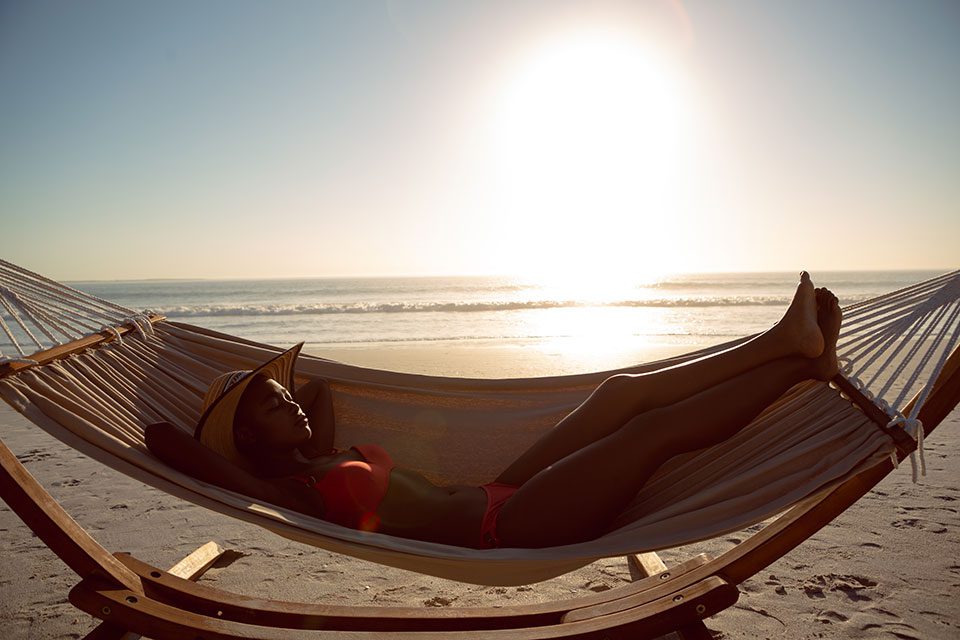
Getting the right kind of sleep is imperative while traveling / Photo by wavebreakmedia_micro on Freepikl
2. Prioritize comfort over speed
Diana: “When I was younger, I went to Bali once for a week, because that’s all the time I had off. It took 23 hours to get there, and everyone said, ‘you’re crazy’. And I said, ‘well, maybe but came back on Sunday and went to work Monday’. You just kind of recover quicker. The aches and pains aren’t as acute.
Now, I am much more aware about my comfort. I’m much more aware of taking care of myself in terms of not lifting heavy luggage, but also making sure I’m as comfortable as I can be on the plane. Taking overnight stays if I can. So that once I get to the place that I’m visiting, I feel healthy and energetic. I don’t feel like I’ve just been beaten with an ugly stick.
I still love going places and it fills me with energy and joy the moment I step off the plane at the final destination and I can’t wait to see what the new Airbnb is going to look like. You know, all those things are pretty much the same as they always have been. But I just kind of treated the old body a little bit better.”
3. Add in layovers on long flights
Diana: “Another thing I do that not everyone can do but when you’re as old as I am and retired, you can afford to take a little bit more time getting to your destination and coming back.
Now, I stop overnight in New York or Toronto and have a wonderful night’s sleep in a nice airport hotel, get up the next morning, and feel fresh. The last leg of the journey feels like no big deal. Doing that whole trip in one fell swoop to me just got overwhelming, and it took me a week to recuperate.
For my trip to Africa, I have a five-hour flight to New York, a 12.5-hour flight to Dubai, and an 11-hour flight to Johannesburg. If you put those all together with the layover time it’s about 33 hours. I think it’s so hard on the body to do 33 hours just grabbing a quick nap in your seat. It’s brutal on the body. So if you have the time, and can take the time to put to two or three days getting there, or two or three days coming back. It makes a world of difference.”
4. Keep hot flashes at bay: sleep with a fan on or in a cool room
Shawna: “Hot flashes are a big part of not sleeping at night. We talked about waking up because you’re feeling anxious. But what about if you’re waking up because you’re sweating through the sheets and you can’t get back to sleep?
As a woman in perimenopause, when it comes to hot flashes and sleep, I wish that there was a magic bullet for it. I love sleeping with a fan on me or in a very cool room. It’s great for your sleep, it’s great for your health, and it’s actually great for your heart. I also like the white noise aspect of having a fan it really helps me sleep and stay asleep for seven hours.”
Tip: Shawna recommends a chilly pad. “A chilly pad is like a cooling pad that you can sleep on at night. It’s really great.” Find one here.
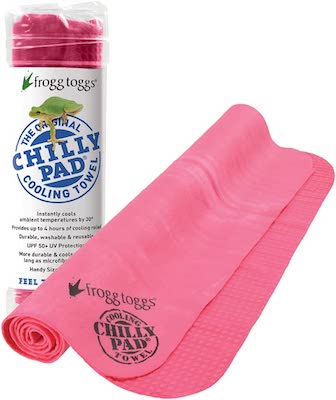
Keep hot flashes at bay with a Chilly Pad
5. Wear sun protective clothing
Diana: “It used to be very difficult to find clothing that was sun protective. I discovered a company called Coolibar, which makes clothing that is treated for sun protection, including bathing suits with long sleeves and covered shoulders. I’m delighted to have found all those things in one place. Coolibar is endorsed by the Cancer Society.
Shawna: “I had melanoma and I was something I hope to never go back to, I found Coolibar after my melanoma diagnosis in 2006. It’s been a life changer for me. I spent five years 100% out of the sun after my cancer recovery. I used their swim pants that kind of look like Lululemon tights.
This clothing allowed me to be in the ocean with my kids and go to the Caribbean, which I didn’t think I was ever going to do that again. It’s now a way of life. Columbia at REI has UPS 50 clothing with long cover-ups for legs and arms, and, hats, and clothes that are moisture wicking. It’s a huge priority for me to never walk down the path of melanoma again.”
Tip: Shawna recommends the Coolibar Sedona hat. “The Sedona one is always in my car. They have foldable hats that you can pack up that are brilliant. You just put them right in your bag. And then you get there you unzip your bag, and the hat is in perfect condition.” Find one here.
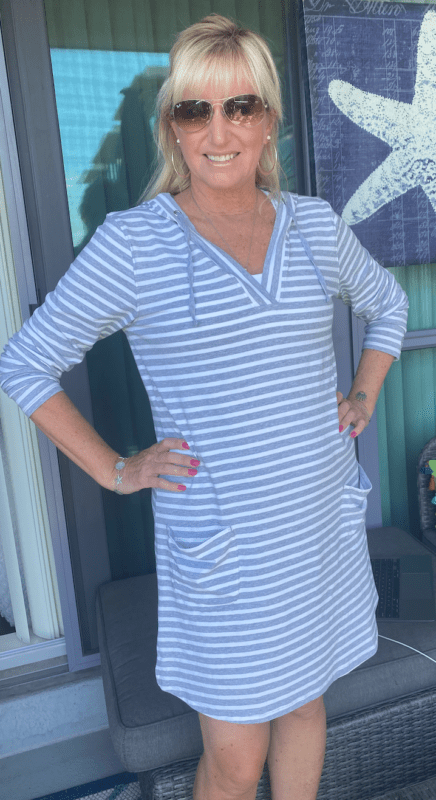
Carolyn sporting her Coolibar sun cover-up, which she also wears as a dress for travel.
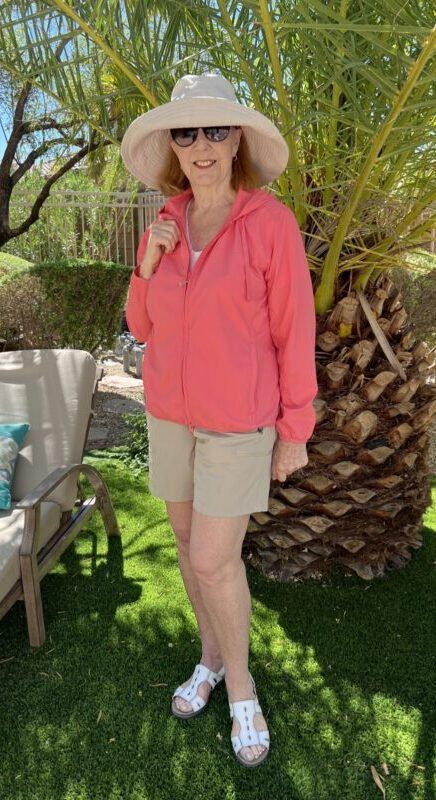
Diana wears her Coolibar sun hat, which she recently wore on her African safari.
6. Travel with electrolytes
Shawna: “I love to travel with electrolytes. I think they’re wonderful. I look for ones that don’t have any sugar in them. A lot of the electrolytes on the market that you can get are packed full of sugar like more sugar than a candy bar. Make sure when you’re reading the container that you are getting ones that have zero sugar, and maybe they use stevia or something else to sweeten them.
They help with jetlag too. Anytime your body is stressed, traveling through time zones, not sleeping in your own bed, not eating your own food, electrolytes are going to help sort of even everything out in your kidneys and in your liver. It’ll be it’s a good thing to have on hand.” Find some here.
7. Plan for time zone changes
Diana: “There’s actually a lot of scientific data to help with time zones. There are a number of apps, like Timeshifter. Our sleep-wake cycle is largely related to light and dark, which is thrown completely out the window when we travel. With these apps, you can enter all of your flight information, where you’re leaving from, what time of day, when you’re arriving and where you’re arriving. The app will analyze it and give you a guide as to when you should try and expose yourself to as much light as possible or avoid light.
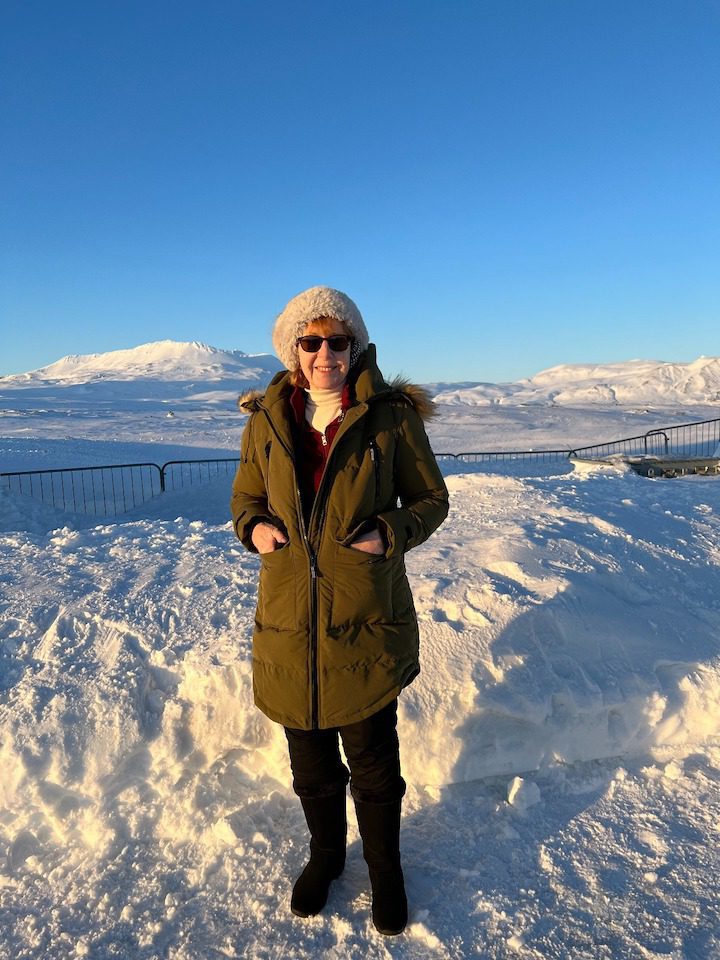
Diana had to turn to plan B on a recent trip to Iceland / Photo provided by Diana Eden
I found it very helpful going to Iceland, as it was an eight-hour time change. It’s quite simple to follow. It’s just one more tool in your kit if you’re traveling across a lot of time zones, and need five days to readjust to a new time zone when you arrive. If you can be adjusted by the time you get there, that’s great.
8. Have a Plan B when you travel
Diana: “I took a short, four-day trip out of Seattle direct to Reykjavik. I was traveling with some other women who live near me. We get to Seattle, and we get a notice that the flight has been canceled for 24 hours due to major storms in the North Atlantic. We had to go to plan B and readjust and figure out something fun to do in Seattle for the day on the spot. We also had the stress of finding a place to do our COVID tests because they expired in 72 hours.
We got the tests, we got the results, we got on the plane, and we landed and we still had bad weather, a lot of rain and snow. Various tours were canceled and we ended up with just two days. Who else goes to Iceland for two days? But it was that or not go at all and it just seemed like well, we’re packed. We’re ready. We just got to do it.
As crazy and disruptive as the whole experience was, by the end of it, we felt great. I was lucky to be with five other women who were not whiners, complainers, or panickers. Everybody just rolled with the punches. I was very fortunate because it could have been awful if I’ve been with the wrong people.”
9. Don’t drink wine at night
Shawna: “Don’t drink wine at night. That is a big thing with hot flashes. There’s a connection between the sulfites and the wine and stimulating hot flashes at night.
Have a glass of wine with dinner, but after dinner, no wine. My clients notice that the more wine that they drink in the evening and the darker the color wine, the more their hot flashes come.
I always remind my clients that alcohol is a known carcinogenic, which means it causes cancer. If you can, have something other than wine, because wine is chock full of sugar, which is something else that’s going to interfere with your sleep and your REM cycles, because your blood sugar is going to go up when you drink it, and then it’s going to crash, two, three o’clock in the morning. No more drinks, no more food between dinner and bedtime.”
The Basics
Breathing: Practice box breathing when you feel anxious
Shawna: “There are the two fundamental things that I find when I work with women that they don’t do enough of. They don’t breathe enough, and they don’t hydrate enough. If you can just remember that it’s these small lifestyle changes that will impact your life in a better way, it’s not big drastic things, it’s not going in and getting rid of all the gluten in your pantry or never drinking wine again, or not eating sugar. It’s all about these small but powerful lifestyle steps that make a big difference over the long haul. When I say breathing, most of us are shallow breathers, which means we just breathe shallowly in our chest.”
Shawna recommends box breathing. According to Shawna, Navy SEALs do box breathing before they go into battle. Not only does it calm down your nervous system, but it oxygenates your blood, which oxygenates your brain. It allows you to have more clarity of mind, you can think better and make better decisions.
How to do it: “It’s very simple. Settle in, wherever you are. I breathe in – my box is four counts. Now you can make it less than four, you can make it more than four, but that is what works for my body. So try around and see what works for your body. So I’m just going to use the four counts for right now.
Breathe in slowly, four counts, and I’ll count you down. Okay, start now. 1, 2, 3,4. Now hold it – 1,2,3,4, release 1,2,3,4, hold 4, 1,2,3,4. Again, breathe in 1,2,3,4, hold 1,2,3,4, exhale, 1,2,3,4, hold 1,2,3,4. And even though I didn’t just do this with you all, I feel more relaxed. I do this at the grocery store, you can do this in your car, if you’re in traffic, you can do this, if you’re waiting on the phone or waiting in line to board an airplane or wherever you are just breathe. Breathe deeply and breathe more and breathe consistently all the way around in a pattern. And that’s going to bring your nervous system down in a really nice calm way.
Tip: Sign up for Calm, which provides meditation and breathing exercises. Or, sigh deeply several times a day.
Water: Drink half your body weight in water every day
Shawna: “Coffee and wine are not water. You want to consume filtered water every single day, ideally half your body weight in water. Some women might say ‘there’s no way I can drink that. I would be in the bathroom every 10 minutes.’ It’s probably true in the beginning, because your bladder is a muscle and it needs to build up to that. Start slowly over time, increasing your water consumption during the day, not in the evening.
You’ll find so many ailments that we have — headaches, dry skin, hair loss, has to do with dehydration, even migraines. If you’re in a hot climate or you can’t find some bottled water, before you know it, you’re incredibly dehydrated and everything is impacted by that.
Tip: Bring an eco-friendly water bottle on your trips. Find one here.
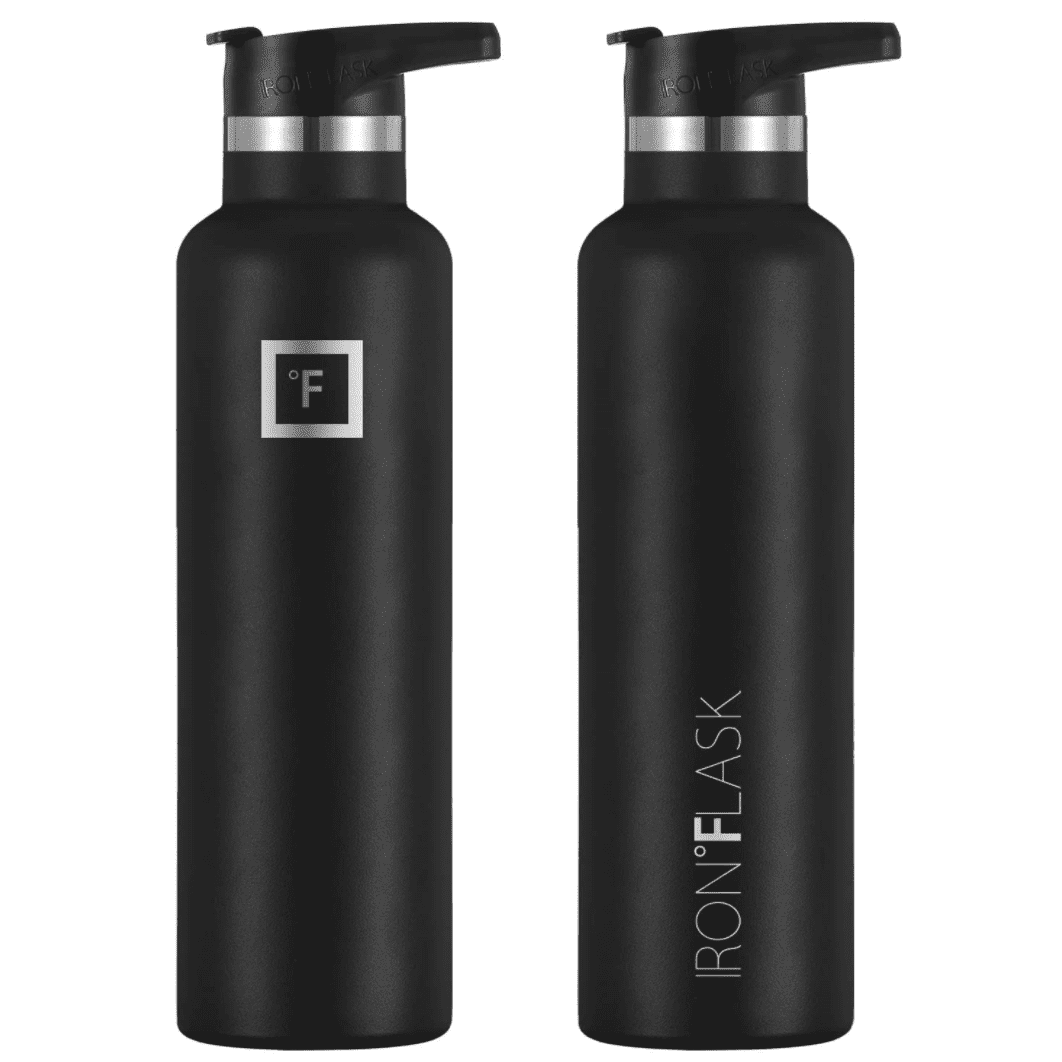
Exercise: Switch your exercise from cardio to resistance training to build bone strength
Shawna: “Once women become postmenopausal, they need to switch their exercise from being cardio based to being more resistance training, and you need that for your bone strength. Getting daily exercise, not only is it a great way to de-stress, but it’s also a great way to oxygenate your body, oxygenate your blood, and make sure you oxygenate your brain. And then it also tires out the muscles so that when you get in bed, you actually do feel tired, and you do want to rest and hopefully you can get that seven to nine uninterrupted hours. That is what’s recommended so that you get the right REM cycles. So your brain can rest, regenerate and restore and clean itself while you sleep at night.”
Diana: “I swim a lot. I’m not trying to say I do 100 laps, or any intense swimming, but anytime you’re in the pool, your body is supported. And I do actually do weight exercises in the pool. And I’m warm, and I’m wet. And it feels great. So exercising doesn’t feel like quite such a pain.
Tip: Carolyn recommends an app called Sweat, which lets you use bodyweight and bands with a structured program.
Read More on Travel and Wellness
When Something Goes Wrong: What to Do if You’re Injured While Travelling
Anything can happen on a vacation. Here are some first-hand tips for women to plan for an unexpected injury.
Alcohol-Free Travel: A Different (and Healthier) Kind of Journey
With the growth of de-alcoholized beers, mocktails and sparkling wine, there’s never been a better to time to try alcohol-free travel.
Menopause Travel Packing List for Women Over 50
Our needs change during menopause; these women-recommended products will help women stay cool and comfortable during travel.




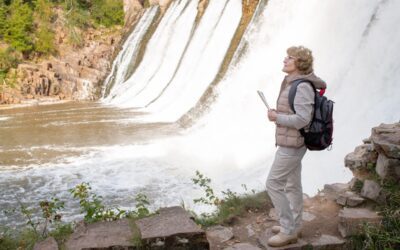

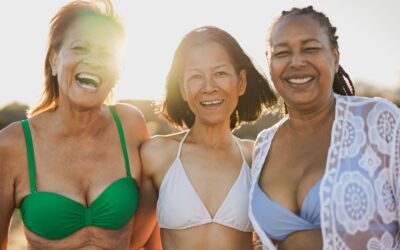
These are useful tips! Thanks
I weigh 100kgs…pretty sure I can’t drink 50L of water a day…